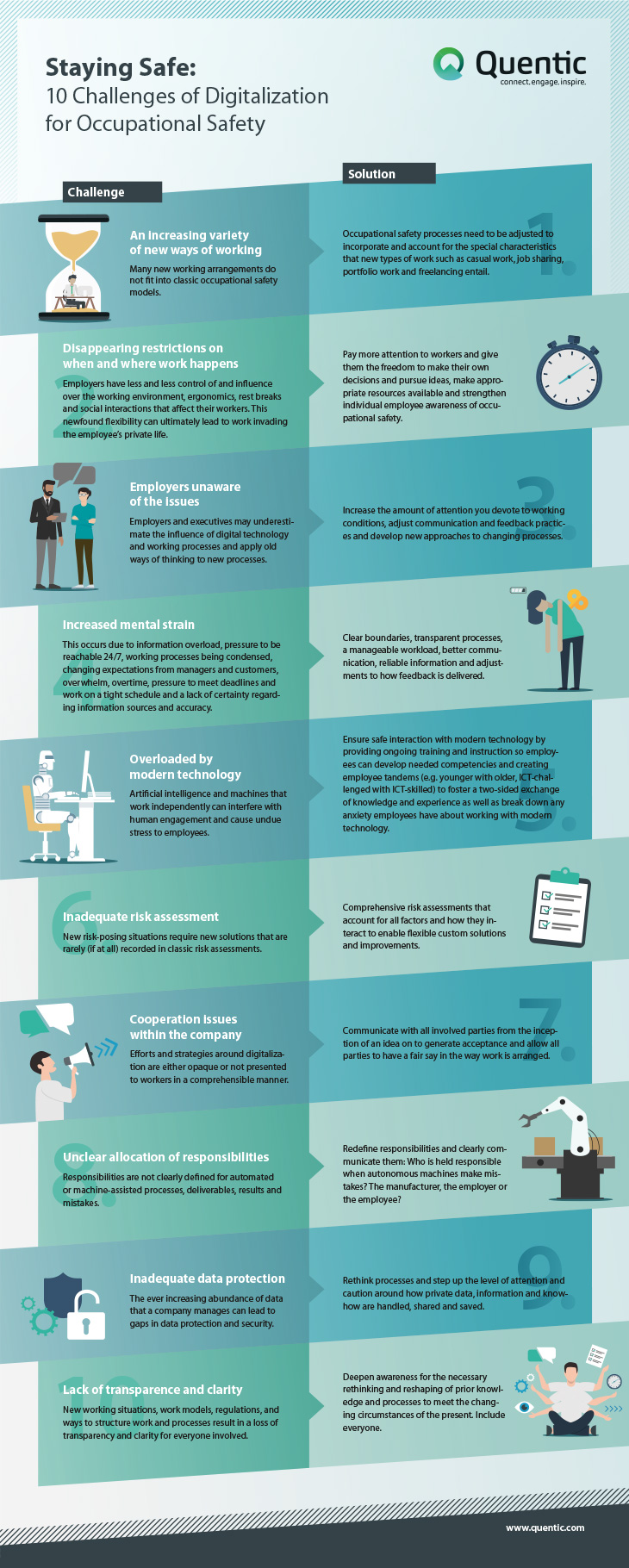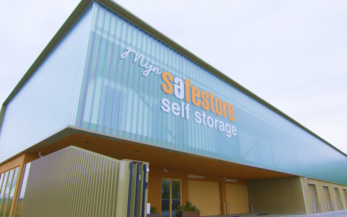6 minutes02/27/2020
Digitalization can bring about a great deal of innovation, productivity and flexibility. Digital technologies are gaining even more ground in occupational safety, improving processes and heightening overall workforce safety. However, new challenges have arisen from the increased digitalization of the working world. Unanticipated dangers are emerging, necessitating new approaches and solutions. Certain well-known problems are being intensified by digitalization. This infographic gives you an overview of 10 key challenges that the digitalization of occupational safety presents and offers actionable suggestions for dealing with them.




